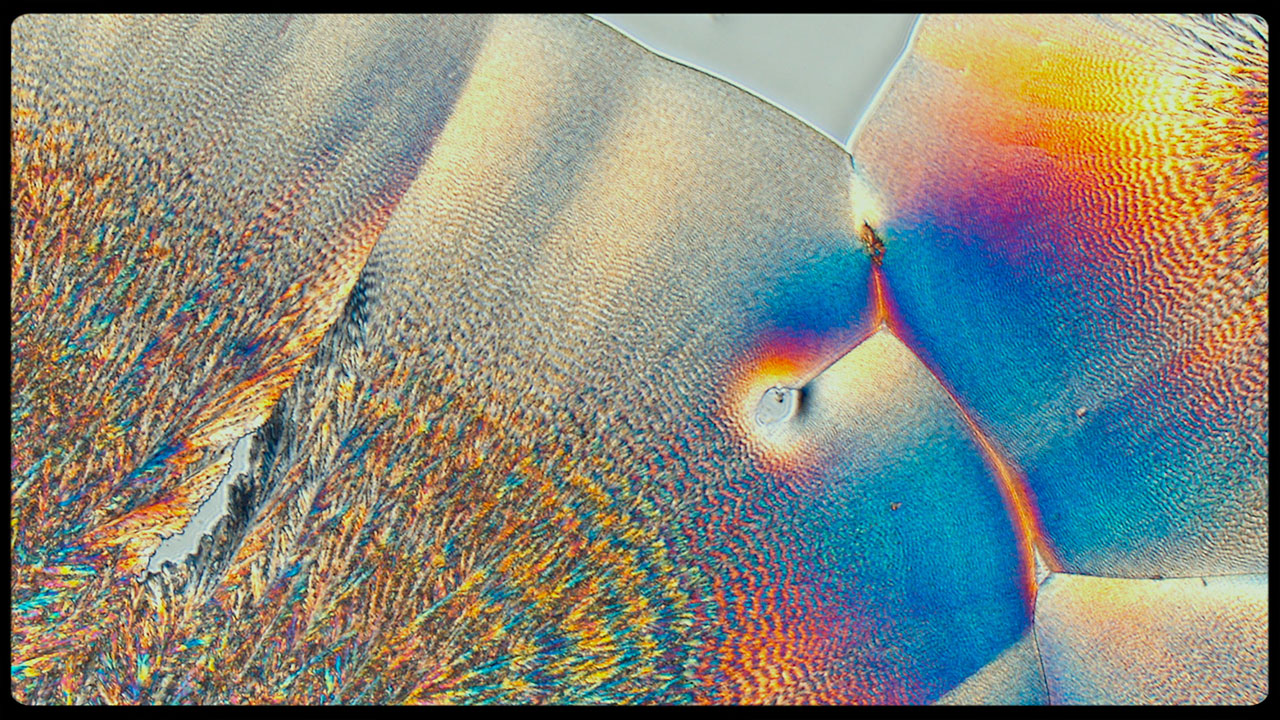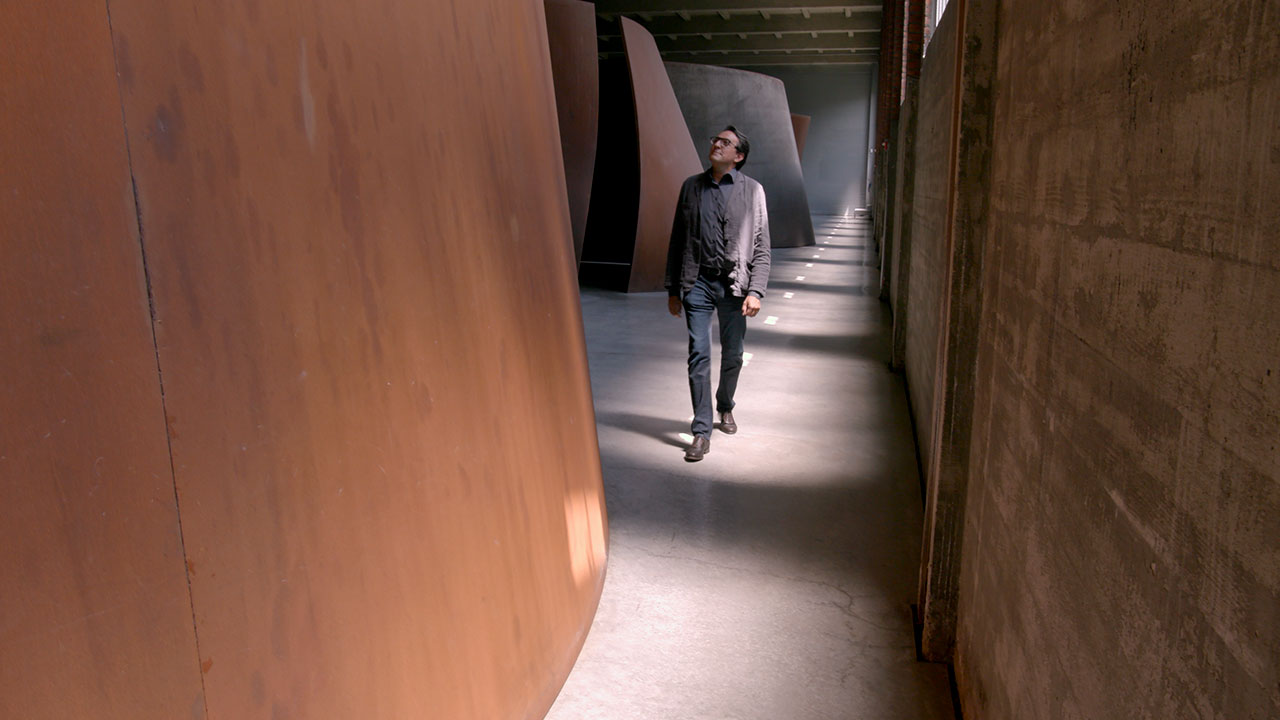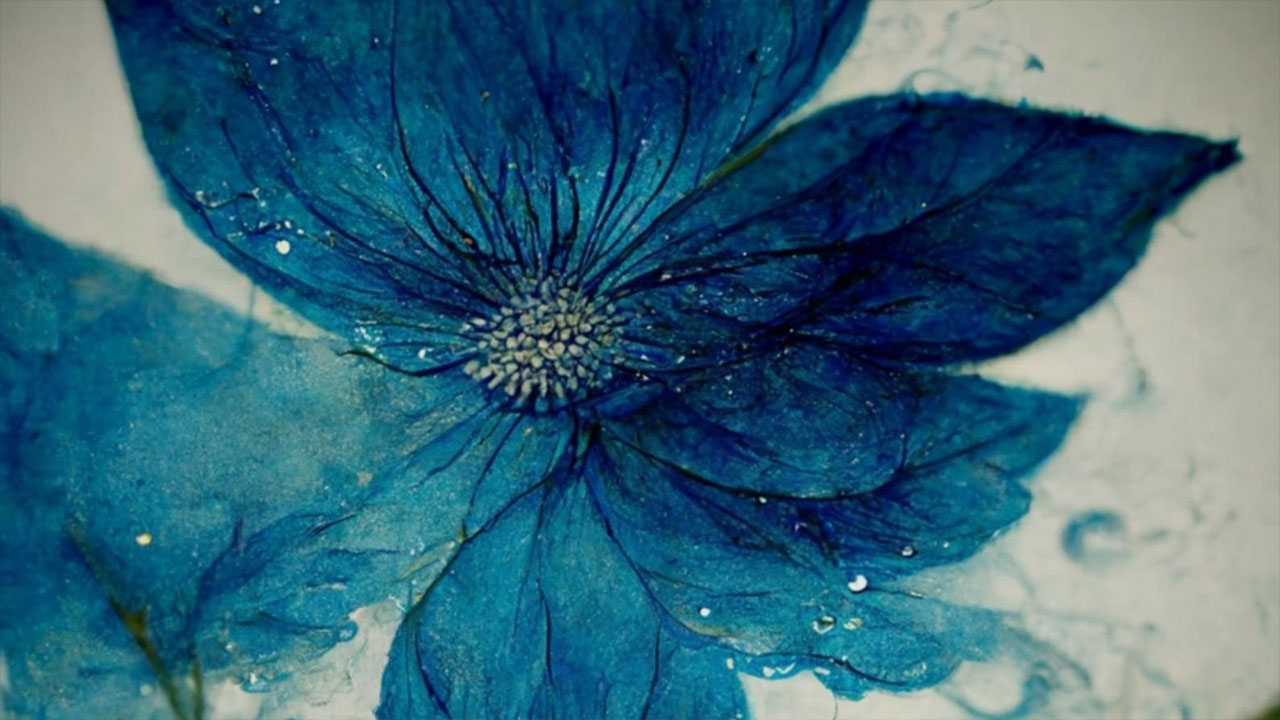The 2024 Science New Wave Festival showed 64 films that approach science in different ways. The variety in the series is such that I've always found films that appeal to my particular interests. That happened again this year with two films that cover a favorite topic, the connections between science and art: The Universe in a Grain of Sand (Mark Levinson, US, 73 min, 2024), and Algorithms of Beauty (Miléna Trivier, Belgium, 21 min, 2022).
I'm a scientist who writes about science and art because I enjoy looking at and absorbing art, and because I (and many others) am intrigued by the possibility of bringing the areas together. Some people see them and their practitioners as occupying opposite cultural poles or even as directly opposed, as if the exactness of scientific thinking diminishes the ability to freely create or appreciate art. I believe that properly blending the two areas can enhance what artists and scientists do, and what the viewer of an artwork or a work of popular science takes away from the experience. Both films show examples of this blending, and also say something about a new player in the field of science and art, artificial intelligence.
In The Universe in a Grain of Sand, Levinson returns to a world he has previously dealt with, the world of the very small. His earlier award-winning documentary Particle Fever (2014) starts with the launch of the Large Hadron Collider, the huge installation at CERN devoted to exploring the tiniest components of nature, elementary particles. It ends with the significant discovery of the Higgs boson at CERN in 2012, the last particle predicted by the overarching theory of elementary particles, the Standard Model, to be experimentally confirmed.
The Universe in a Grain of Sand - A Conversation at the Museum of the Moving Image
Opening Night - Science New Wave Festival XVII - October 18, 2025.
From right to left, director Mark Levinson, IBM's Director of Research Dario Gil, filmmaker/artist Erin Espelie, moderated by neuroscientist Heather Berlin.
Levinson brought a personal mixture of science and art to Particle Fever. He became a filmmaker after earning a PhD in particle physics at UC Berkeley in 1983. His new film extends the connections between science and art as he sees them. Its title comes from the famous line “To see a world in a grain of sand” by the mystical English poet and artist William Blake (1757- 1827), cited at the start of the film. That's apropos, because the scientists in the film work in a small world described as the universe of bits, neurons, and qubits (quantum bits). But science and art are intermingled throughout the film, under the theme that both are ways of perceiving the world.
The science is presented in a whirlwind tour of what led to computational and quantum technology, neural nets, and artificial intelligence. Starting with the history of tools and materials as the basis of technology and scientific instruments, the story is narrated by Dario Gil, Director of IBM Research (which provided support for the film) and three other IBM scientists; and by George Tyson, historian of technology; Louis Ceze, computer scientist, University of Washington; and Sarah Schwettmann, computational neuroscientist, MIT. They guide viewers in a direct line through the invention of the vacuum tube; the evolution of the transistor and the chips that house billions of them to embody digital bits; the similarities between these components and the neurons of the brain that lead to neural nets and AI; and the introduction of qubits that hold more information than ordinary bits, with important implications for technology.
Art appears alongside the science in images and clips showing the work of over 90 artists, some of whom also speak directly to the camera. Painting, sculpture, film, photography and more are shown, with artworks from the 19th century until today. Some portray a scientific concept, such as a high-contrast black and white photograph, part of a series by Berenice Abbott from the 1950s and 1960s, showing the iron filings that define a magnetic field. The superb drawings of neurons by the Nobel laureate neuroscientist Santiago Ramón y Cajal, made in the late 19th and early 20th centuries, display his new scientific discovery, the intricate neural networks of the retina and brain.

Other artworks embody a scientific principle. George Seurat's 1884 painting A Sunday on La Grande Jatte displays his pointillistic method, where dots of color mix in the viewer's eye. As a bonus, the painting accompanies a discussion about moving from an analog world to a digitized one. The viewer sees separate dots coalesce into recognizable trees and human figures, an apt use of art to show how meaning arises from digitized information. A contemporary work, James Turrell’s ongoing Roden Crater project, highlights an artist known for his unique manipulations of natural and artificial light. Other choices seem less relevant to science and art, such as a clip from the film Mothlight (1963) by well-known experimental filmmaker Stan Brakhage. But viewers can themselves decide what exemplifies science and art from among the many offerings.
Viewers also learn about AI and art when computational neuroscientist Sarah Schwettmann points out how AI used in art can advance science. Image-generating AI is a useful tool for artists but cannot yet do what they do, reduce a real world experience to a simple sketch that conveys the essence of the experience. Much of the dialogue about science and art, she notes, asks how each inspires the other. She proposes an added question: what are the underlying common components of how people approach science and art? Studying how AI artistic creativity compares to human creativity could answer fundamental questions about how we perceive the world.

Dario Gil (Senior Vice President and Director of IBM research) walks through Richard Serra 'Torqued Ellipses' at Dia Beacon, NY.
Algorithms of Beauty, by filmmaker and colorist Miléna Trivier, is a very different film about science and art. One character in the film is a contemporary woman, unnamed but identified as a programmer, with artistic leanings. She is inspired by the other character, the real 19th century English botanist and artist Mary Delaney (1700-1788). At age 72, Delaney invented a new art form, the collage, which she called paper mosaics. She would cut to precise shape hundreds of small pieces of paper of different colors and carefully arrange them to display every detail of a flowering plant. She overlaid the paper pieces to represent the natural overlap of petals and leaves, resulting in a textured, accurate, and beautiful representation of the plant. She created nearly 1,000 of these works before she went blind.

As the film begins, the programmer is disappointed to find that most images of flowers seem lifeless. Perhaps she can do better with her AI, literally (and symbolically) a black box whose glass portal displays its inner workings and takes in visual data. She discovers Delaney’s paper mosaics and concludes that “AI images are also a kind of mosaic. They're built from existing images...that I need to provide.” But after feeding in Delaney’s images, the AI results are unsatisfying. The programmer sees why, after reading Delaney’s comment that she began doing paper mosaic art “to make up for the loss of those who had been dear to me.” To the programmer, AI images lack these human associations and are only images “locked in my black box.”
She tries instead to cut up and arrange bits of paper, but like Delaney, finds that her eyes and hands grow tired. She reflects that AI lacks physical constraints and could generate new flower shapes for years. But this is no answer either because “The machine and I don't see the same world. It doesn't recognize beauty.” Finally she takes the AI into the world of real flowers. She grasps bunches of purple thistles and inhales their scent, directly experiencing their living presence. This produces AI images that she can relate to “because I spent time making them.” She adds, “They are imperfect, but that's how my eyes can complete them. They begin to be part of me, of us.”
Still from Algorithms of Beauty
The two films show the many ways that science and art can influence each other. Neither film tries to strictly define “science and art,” and like trying to strictly define “art” itself, that's probably best. A more open approach leaves room for experimentation. The latest example is the potential symbiosis between the advanced capabilities of AI and the sensibility of the artist, shown in both films and especially when the programmer in Algorithms of Beauty speaks of her time commitment to making AI images and then improving them with her own eyes.
Ironically, William Blake, the poet and artist who provided the perfect quote for The Universe in a Grain of Sand, critiqued science and rationality as limiting the human spirit and imagination. His contribution to science and art is the 1795 print Newton, showing the great scientist hunched over and naked as he imposes a narrow and mechanical rationality on the world. If AI unleashes artistic imaginations in new ways so that AI also acts as IA, imagination augmentation, perhaps even Blake would agree that science and art, taken together, can enhance the human spirit.
Cover Artwork from Kate Balsey, 2021
Sidney Perkowitz, Emeritus Candler Professor of Physics, Emory University, writes often about science in film. His latest books are Physics: A Very Short Introduction, Real Scientists Don’t Wear Ties, and Science Sketches. He’s at work on A Degree in a Book: Physics.